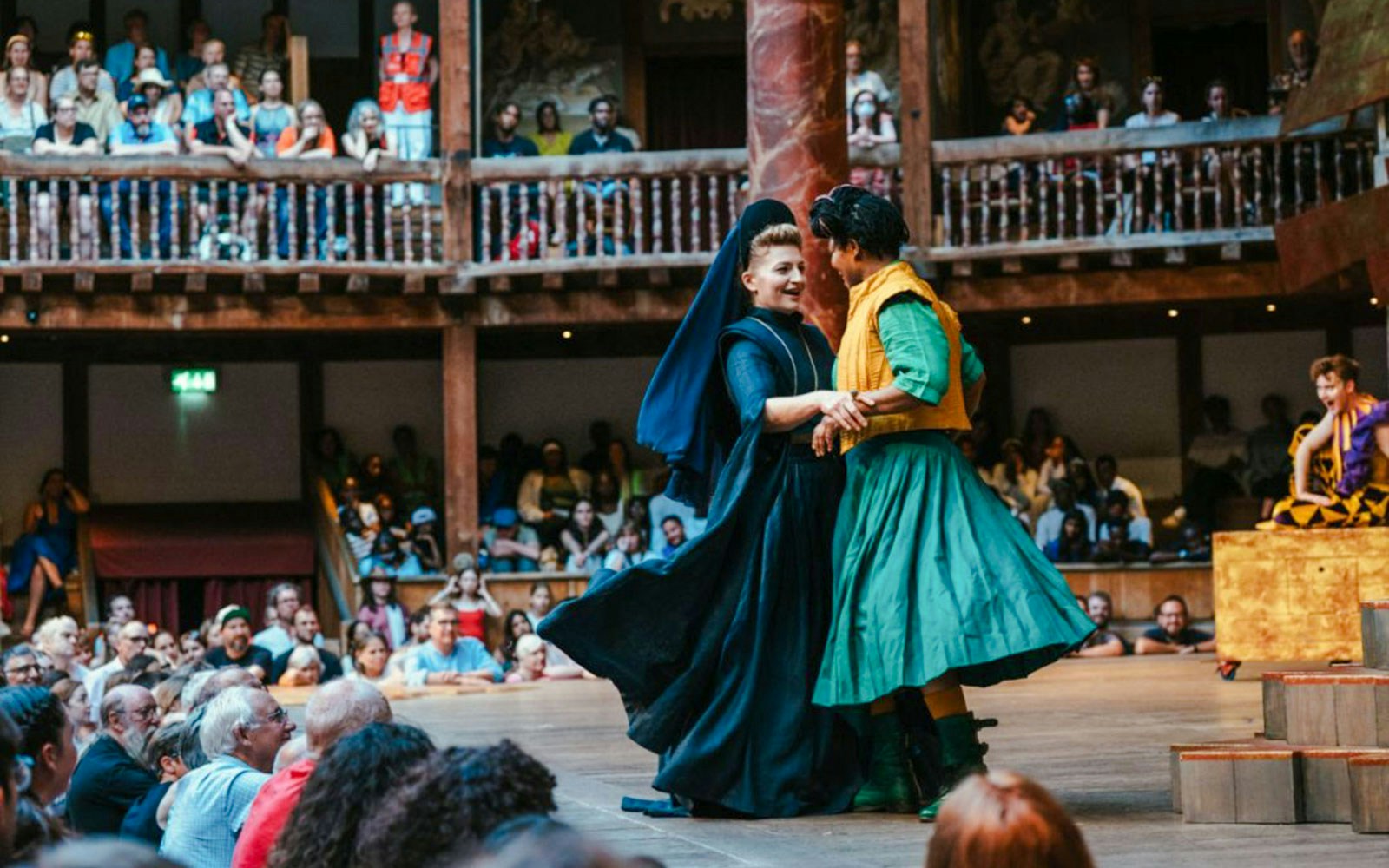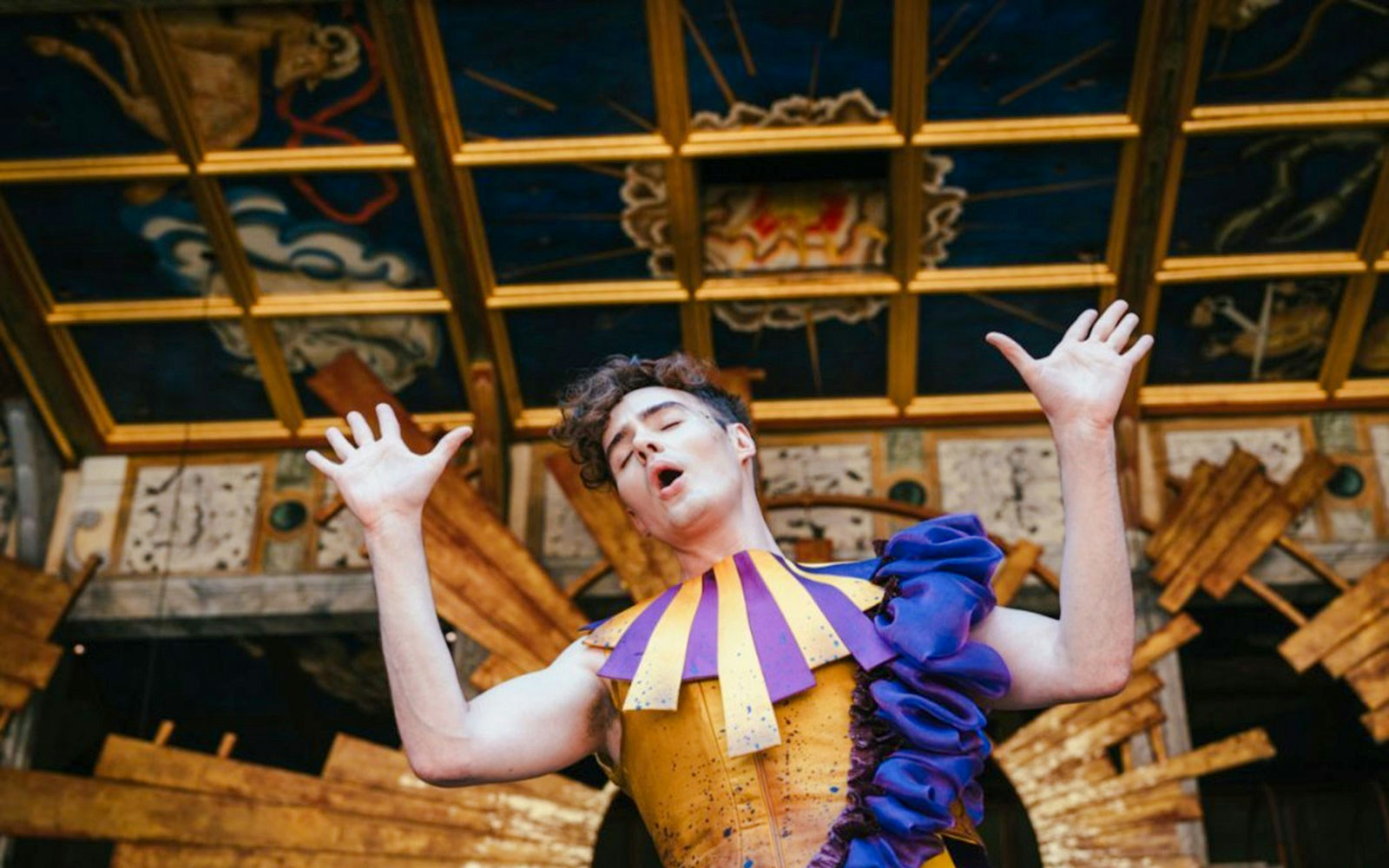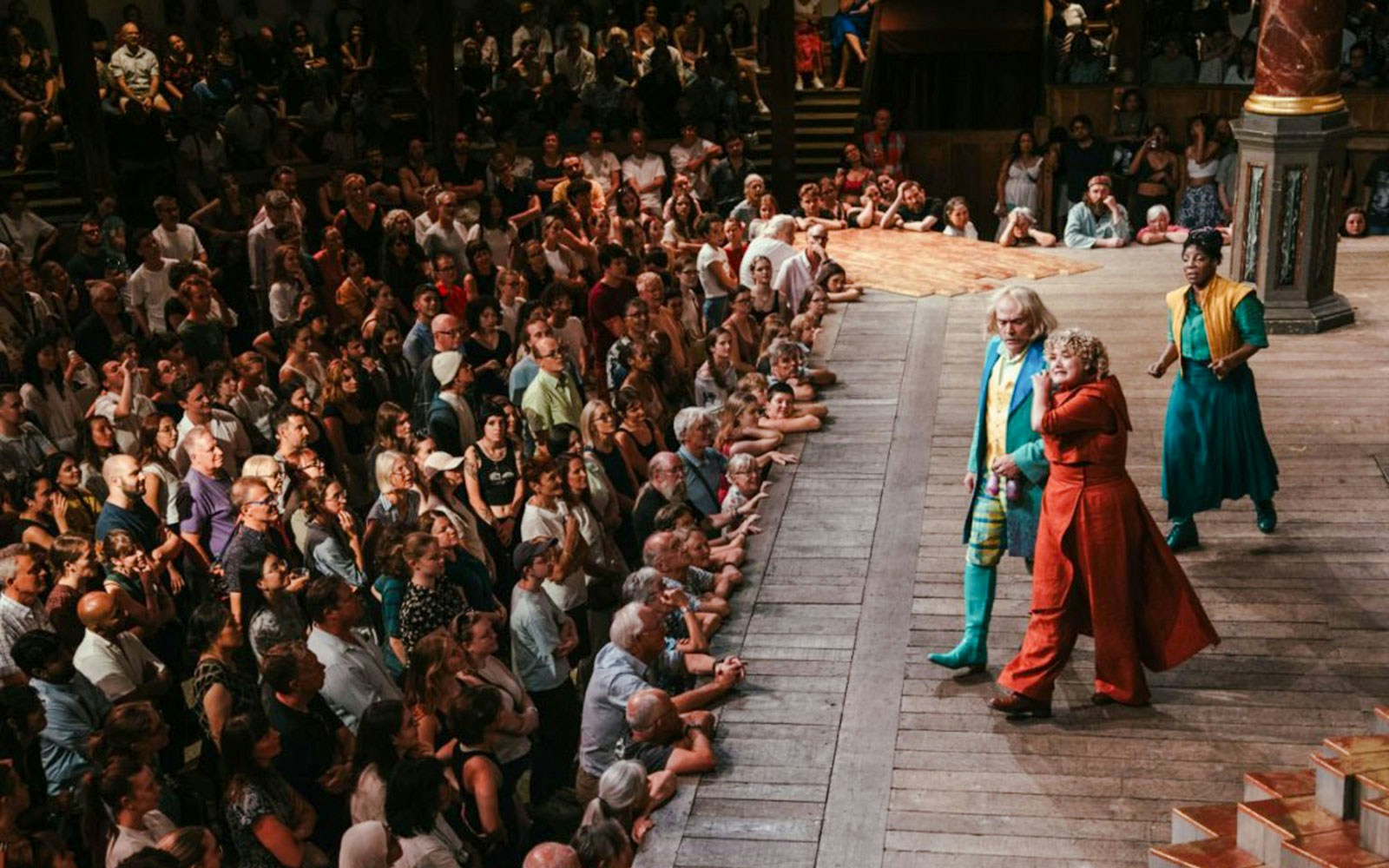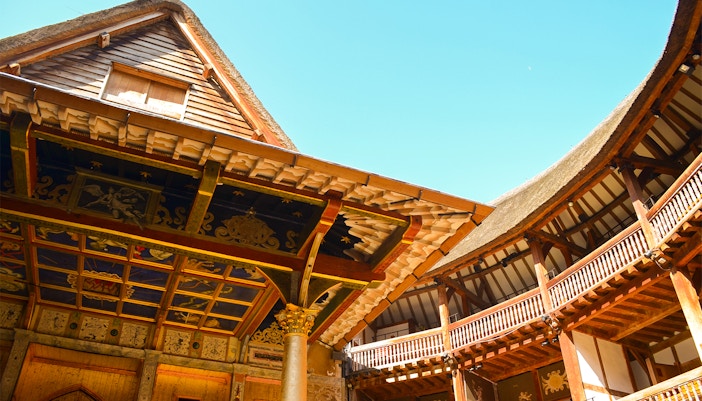The Globe recreates Shakespeare’s “wooden O” with a circular yard surrounded by three tiers of gallery seating. Audiences stand under London skies as films do indoors, with only classical sound effects. Capacity is approximately 1,400 spectators, about half of the 3,000-seat original, ensuring intimate, immersive viewing.
Shakespeare's Globe theatre history | From 1599 foundations to modern revival
The history of Shakespeare's Globe theatre explained
Early era (1599–1613)
Built from the timbers of The Theatre dismantled in Shoreditch, the old Globe theatre served as home to the first performances of Julius Caesar, Hamlet, King Lear, Othello, and more, where Shakespeare performed, invested, and revolutionised live theatre.
Golden age & the fire (1613–1642)
The Globe thrived, even after the first thatched-roof version burned during a performance of Henry VIII in 1613. It was rebuilt in 1614, larger and more decorated, with a tiled roof, a symbol of triumph and spectacle over adversity.
Puritan suppression & loss (1642–1645)
In 1642, Puritan authorities ordered the closure of all theatres, condemning them as immoral. The Globe fell silent, its lively performances replaced by years of cultural suppression. By 1644–1645, the building was dismantled, and London would not see it rebuilt for more than 350 years.
Rediscovery & reconstruction (1970–1997)
Sam Wanamaker’s vision and decades of scholarship led to a faithful recreation of the 1599 Globe theatre. Opened in 1997, the new Globe theatre embodies the structure Shakespeare knew, housed near its original location on the Bankside.
The Globe theatre today
🌤️Stunning open‑air amphitheatre experience
Frequently asked questions about Shakespeare’s Globe theatre history
The Shakespeare’s Globe theatre was built in 1599 on Bankside by Shakespeare’s company, Lord Chamberlain’s Men (later the King’s Men), with Shakespeare himself as a stakeholder, using recycled timbers from The Theatre in Shoreditch.
It burned down in 1613 during Henry VIII. Rebuilt in 1614, it was closed in 1642 and demolished in 1644–45.
The new Globe theatre is a faithful reconstruction opened in 1997 near the original site, following historical designs and techniques.
Globe was open-air and seasonal; Blackfriars was an indoor theatre within city limits. The modern Globe includes the indoor Sam Wanamaker Playhouse for winter performances.
Yes, the Shakespeare’s Globe theatre tour walks you through architectural history, Shakespeare’s era, and backstage spaces.
Inside, you’ll find three levels of galleries, the central yard for standing groundlings, wooden pillars, a thatched roof, and actor-accessible balcony and trapdoor stage areas.
Many of his greatest works, including Hamlet, Othello, King Lear, Macbeth, As You Like It, and Julius Caesar, premiered at the Globe, often tailored to the theatre’s open-air design and ensemble of actors, including Richard Burbage.








